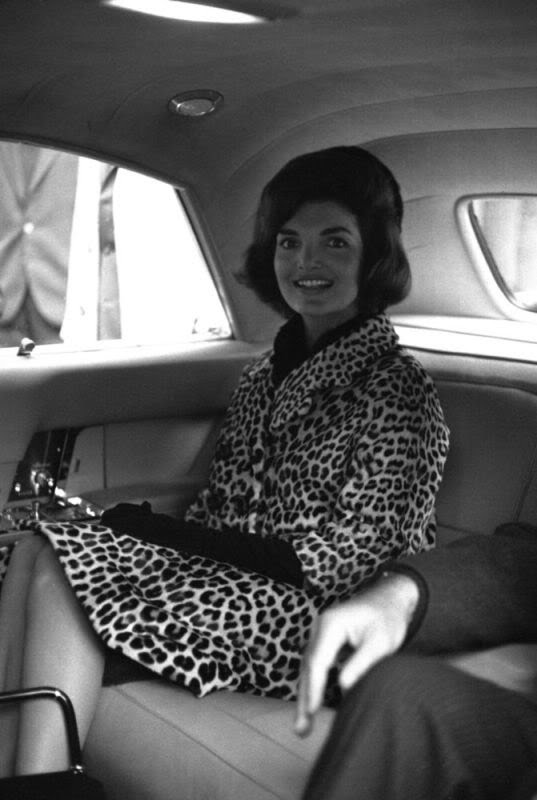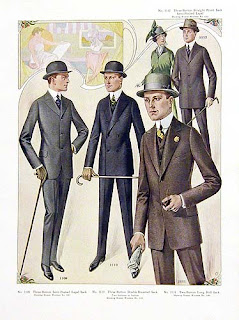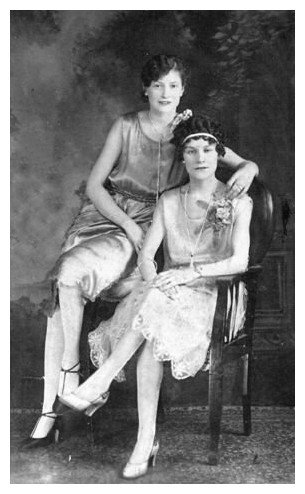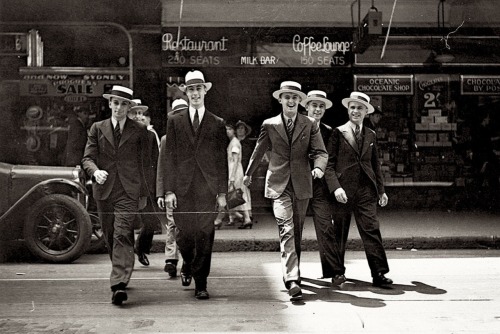Moving on……
After Dior’s ‘new
look’ in 1947, women were now able to flaunt their shape and femininity. Dior’s
‘new look’ dominated the era for the next 10 years and up into the earlier part
of the fifties.
 Tight fitting jacket,
with padded hips pulled in, emphasizing the tiny waist with a long pleated wool
skirt, backed with cambric (fine white plain weave linen cloth) making it
exceptionally heavy.
Tight fitting jacket,
with padded hips pulled in, emphasizing the tiny waist with a long pleated wool
skirt, backed with cambric (fine white plain weave linen cloth) making it
exceptionally heavy.
The Festival of Britain Exhibition 1951
This exhibition was designed to celebrate
Britain's past but most importantly look towards Britain's future and show the
rest of the world how they had recovered from the war.
For many it was an exciting but depressing
experience as many of the items were destined for export.
The festival was held at the south bank on
the River Thames, and lots of new buildings were created for the event, the
festival produced new colourful fabrics, clothing and accessories as well as
scientific developments, including the televisions which for most people was
the first time they had seen one.
glamour had arrived
The clear dividing moment in the decade was
in 1956 when fashion and society began to move away from the strict controls of
the 40’s to a more flexible and youthful lifestyle.
The 1950’s brought the age of the teenager,
before then women had made themselves to look like their mothers and the
optimum age was age 30’s-40’s at the beginning of the 1950’s. A new teenage
driven fashion style was born. The 50’s saw the breaking of a mould and people
today still strive to look as youthful as possible.
Men's Clothing
The beginning of the 1950’s saw men wearing
virtually the same clothes as they had been for the past ten years, lounge
suits, raincoats and trilby-type hats. But under this was a quite revolution in
menswear. The war years saw uniformity and
this led to a desire for a more casual approach to dress.
 The war meant the USA had become the source
of fashion and represented everything that had disappeared from Britain, even
the uniforms of the GI’s looked better than those of the British.
The war meant the USA had become the source
of fashion and represented everything that had disappeared from Britain, even
the uniforms of the GI’s looked better than those of the British.
Highly decorative ties, usually hand painted
sporting exotic scenes, jazzy patterns, skyscrapers and even pin-up girls were
often worn.
The ‘Bold Look’
A very popular American import was the
wide-shouldered ‘zoot suit’. With its longer length, wider cut, and large
stripes or checks it was named the ‘bold look’. When Cecil Gee a shop in Charing Cross began
importing American menswear, queues formed outside.
For most of the
decade men continued to wear the traditional lounge suit with slight changes in
the form of jumpers, colourful waistcoats and ties.
One of the biggest revolutions came in the
form of a shirt, the Hawaiian shirt found its way from America to England and
open the door to unfitted, short sleeved and patterned shirts. This then
developed into shirts with waist high pockets worn un-tucked and into a cross
between a shirt and a jacket.
American styles such as the Hawaiian shirt,
and growing market in denim jeans, driven initially by teens but slowing
spreading throughout the ages, reflected the idea of America being the source
of new and desirable things, and also
the growing wealth of Britain.
‘Teddy Boys’
Some men resented American imports and
decided to sport a more traditional dress. They emulated what their fathers or
their grandfathers had worn. This consisted of a long, narrow pin-stripe,
single breasted suits, worn under fitted coats with velvet collars. Little did
these upper class Brits realise that they would inspire the south London youth.
By the mid 1950’s men wanted a change and new
clothes needed to be more stylish, and the focus swung from America to Italy
and owning an Italian suit became almost a status symbol.
The increasing amount of British tourist due
to rising wages and falling travel costs brought back theses suits.
Women’s Clothing
 Although throughout the 1950’s hemlines
changed all the time, the hourglass figure remained. Both full layered skirts and tight pencil
skirts were popular.
Although throughout the 1950’s hemlines
changed all the time, the hourglass figure remained. Both full layered skirts and tight pencil
skirts were popular.
The emphasis on silhouette led to a
dependency on undergarments - bullet bras, corselets, waist-cincher
corsets, girdles and shaped circle
skirts.
Dior continued to be popular and lead french couture but private couturers began to be replaced by ready-to-wear clothing.
Design houses such as Suzy Perette and Lilli Ann, as well as american designers like Tina Leser proved that off-the-rack garments could still be made of good quality. America led the way with high fashion, once restricted to the wealthy, was available to everyone.
Women were focused on rearing children and looking after the home, after returning from there jobs in the war years. Emphasis was on atrractive practical clothing,not just for household duties but also suitable for running erands.
 Women were expected to attend or hold social gatherings to further their husbands careers, this brought in the cocktail dress, a shorted version of a ball gown, women wore hats outside of the house and gloves, short during the day time and long in the evenings.
Women were expected to attend or hold social gatherings to further their husbands careers, this brought in the cocktail dress, a shorted version of a ball gown, women wore hats outside of the house and gloves, short during the day time and long in the evenings.
The later part of the 50's still focused on women dressing for men, emphasising their figure with girdles and bras, highlighting their natural appeal.
In the late 50's two new looks arrived, the sack dress, completely going against the hour glass silhouette and the trapeze dress created by Yves Saint Laurent, slightly more fitted but still different from the fashions of the day.







































